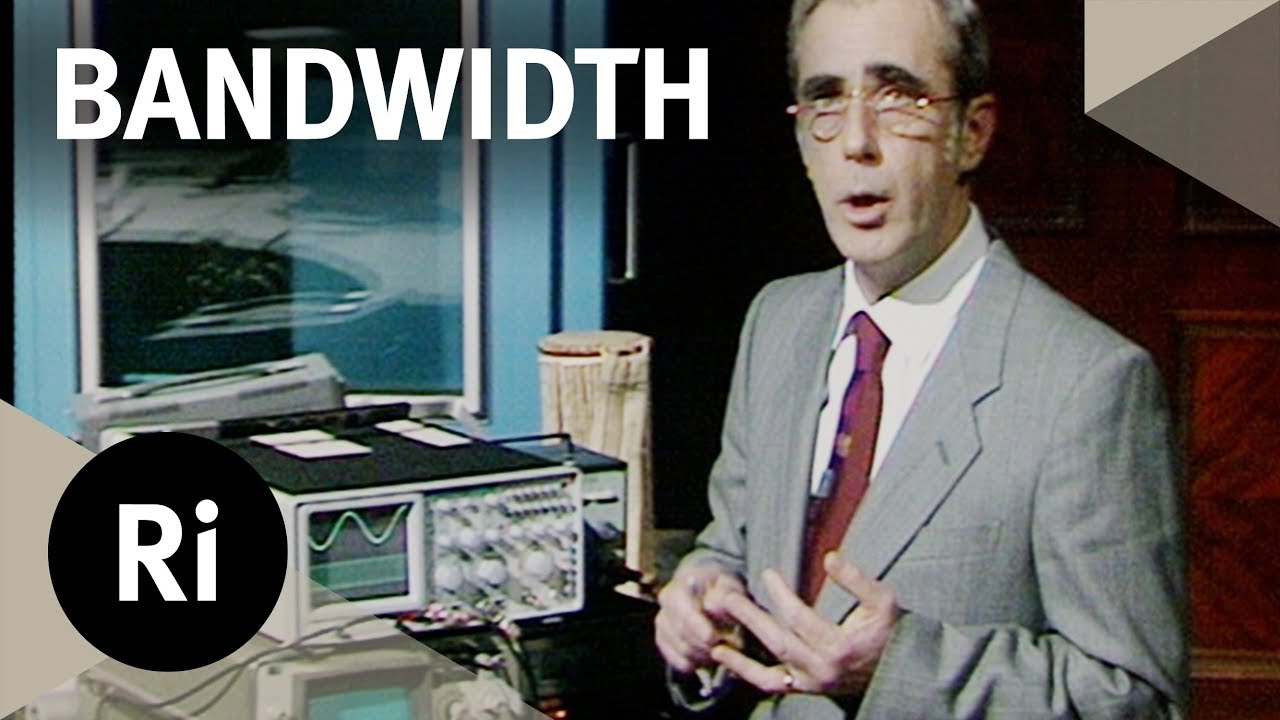The Royal Institution
How are signals transmitted and processed and what’s the role of bandwidth within it?
Subscribe for regular science videos: http://bit.ly/RiSubscRibe
Watch the full lecture: http://www.rigb.org/christmas-lectures/watch/1985/communicating/no-man-is-an-island?utm_source=youtube&utm_medium=social&utm_term=description
David Pye gave the 1985 Christmas Lectures “Communicating” about the incredible world of communication. From the man-made satellite dishes to the complex biological system of bat communication.
In his first lecture, David Pye introduces the audience to the myriad of ways humans communicate with each other.
Watch the full series: http://www.rigb.org/christmas-lectures/watch/1985/communicating?utm_source=youtube&utm_medium=social&utm_term=description
The Ri is on Twitter: http://twitter.com/ri_science
and Facebook: http://www.facebook.com/royalinstitution
and Tumblr: http://ri-science.tumblr.com/
Our editorial policy: http://www.rigb.org/home/editorial-policy
Subscribe for the latest science videos: http://bit.ly/RiNewsletter
Source




First
Now I can die happy.
That is actually a smart phone from that era
Still one of my most favourite RI Christmas Lecture!
00:22 “small ticking clock”
man!! .. it's geniu
man!! .. it's cool.
1.) The clock is a source of ticking sounds, not of "exactly what time it is."
2.) No discussion of what a side-band is. Why are there sidebands?
3.) Between 5:30 and 5:50, confusion about "the original signal" and "the signal I want to send." In the first case there is no explanation of how a radio attuned to the carrier can recreate the message carried, as claimed; in the second he is playing with the carrier, but this is very plainly not the signal "he wants to send."
This is a very unusual video because the Royal Society usually respect their audience enough to be accurate. The inaccuracies here seem to me quite clearly to come from an attitude of "oh, they wouldn't care about that" or something of the sort.
What I care about here is three separate things, inaccuracy and inadequacy of what is being conveyed and sloppiness it the conveyance.
I.e. the guy has both message and carrier signal problems. 🙂
Very nice lecture
Wow…
Why do you cut these videos short! I hate it every time they end. Please put the full videos!
So “bandwidth” is literally the result of the Heisenberg uncertainty principle?
I didn't get the oscilloscope bit. With AM, I would expect the peak in the spectrum go up and down, and with FM, I would expect it to move side to side.
It’s already been done by kids in a Popular Mechanics magazine. They used an Arduino board and led Lights. Run through a laptop and speaker. But as far as I can tell nobody is producing them for sale. The instructions are in Popular Mechanics magazine.
you really dont notice the false signal? are you blind
trust me , you want to have a proper tool? air gap wire polarity ! 1 pole together the other pole together as much as possible! and dont forget to airgap! with this? you ll have no sensor hickup and will likely dscover new way of doing thing since you get the proper value and likely answer some unanswerable question
Mr. Coates was a staple of the Christmas Lectures back in the day. Great to see him again.
The young lady to his left (at the start of the clip) is his daughter; Melanie I believe. She appeared as an assistant to Mr. Coates for several years, and in one lecture brought her baby to the show as part of a demo (if I recall correctly).
am as shortwave radio has the advantage over fm that it can be sended around the world without satelites
Trim them MFr's Groucho ! Actually this entire series is pretty awesome, even being as old as it is. Well worth checking out imo.
What a glorious non-explanation.
I'.ve seen bad comments about these small extracts, but to me it's really refreshing and I appreciate it.
Essential knowledge of Physics that should be taught to everyone with eyes and ears.
Doesn't explain the concepts to where you can connect all of the dots, but gives demonstrates with enough empirical data and high level terminology for you to ask more questions.
the legacy